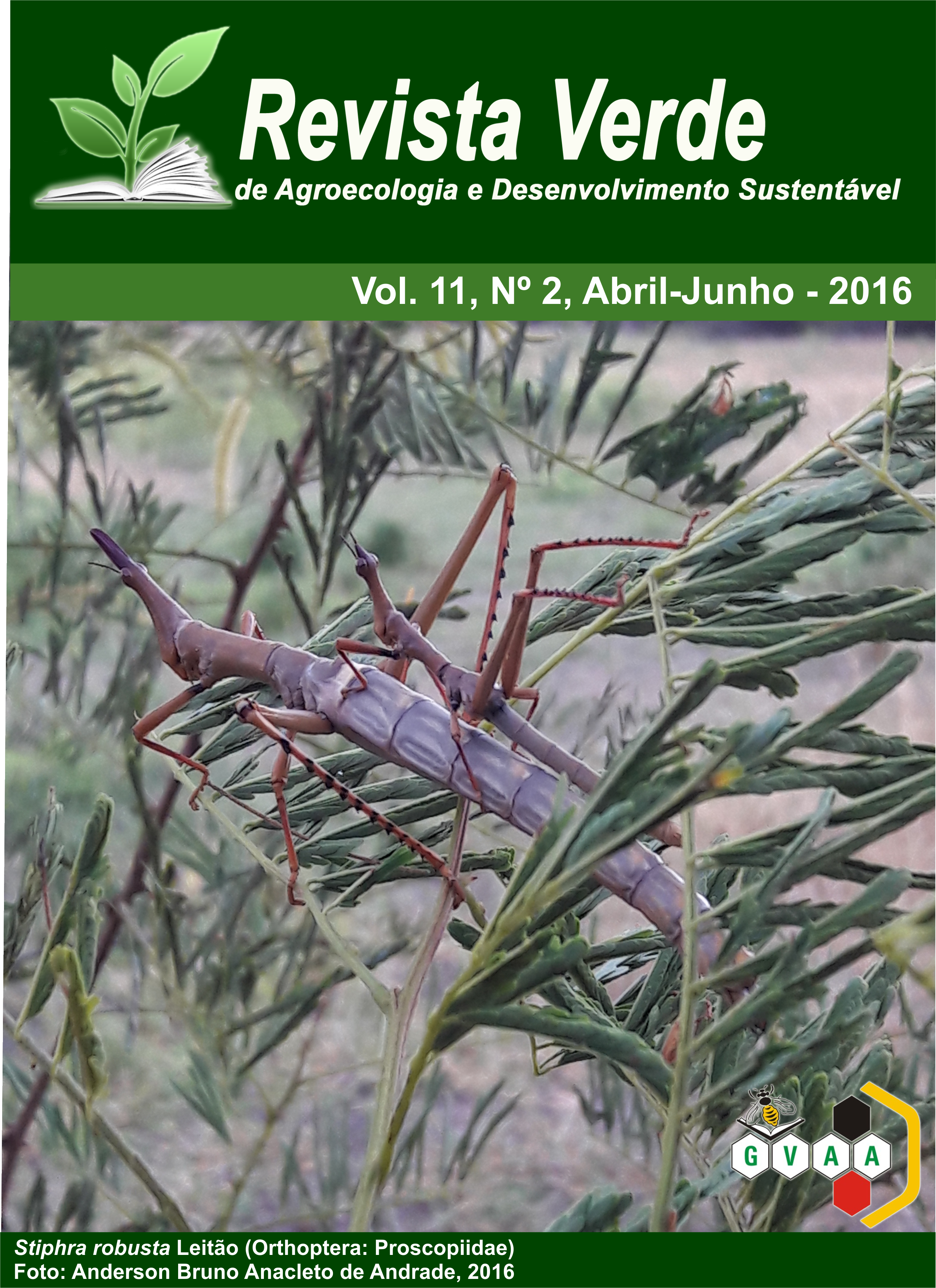Adubação verde com espécies espontâneas da caatinga no cultivo do rabanete em sucessão a rúcula
DOI:
https://doi.org/10.18378/rvads.v11i2.4498Keywords:
Efeito residual. Jitirana. Flor-de-seda. Mata-pasto.Abstract
O rabanete é uma planta de ciclo curto e o ambiente exerce grande interferência na qualidade de suas raízes O efeito residual da adubação anterior em cultivos subsequente é de suma importância, uma vez que a fertilização do solo em uma atividade tão intensa, como a olericultura, aumentaria o custo de produção sempre que fosse implantada uma nova cultura. Este trabalho foi conduzido na fazenda experimental Rafael Fernandes, pertencente à Universidade Federal Rural do Semi-Árido, Mossoró-RN, no período de julho a novembro de 2010. Objetivou-se avaliar a adubação verde com espécies espontâneas da caatinga no cultivo do rabanete em sucessão ao cultivo da rúcula. O rabanete assim como a rúcula foi plantado em parcelas de 1,2 x 1,2 m sendo avaliado o efeito residual das espécies espontâneas da caatinga (Jitirana, flor-de-seda e mata-pasto) nas quantidades (0; 6,0; 12,0; 18,0; 24,0 e 30,0 t ha-1). Após a retirada do primeiro cultivo, semearam-se sementes de rabanete nas parcelas referente aos tratamentos acima citados. O delineamento experimental foi em blocos casualizados com três repetições, no esquema fatorial 6 x 3, sendo seis quantidades de adubos verdes e três tipos de adubos verdes (jitirana; mata-pasto e flor-de-seda). A cultivar de rabanete plantado foi a Crimson Gigante. As características avaliadas do rabanete foram: altura de planta, diâmetro de raiz; número de folhas; produtividade comercial e raízes mais parte aérea. O efeito residual da quantidade 23 t ha-1 de adubo verde promoveu maior incremento na produtividade comercial e de raízes mais parte aérea, cujos valores máximos foram de 1,5 e 2,26 kg m-2 de canteiro, respectivamente.
Green manuring with spontaneous species of the savanna in radish cultivation in succession to rocket
Abstract: The radish is a short-cycle plant and the environment has great interference as its roots the residual effect of previous fertilization in subsequent crops is extremely important, since soil fertilization in such an intense activity, such as horticulture, increase the cost of production when a new culture was implanted. This study was conducted at the experimental farm Rafael Fernandes, belonging to the Universidade Federal Rural do Semi-Arido, Mossoró-RN, in the period from July to November 2010. The objective was to evaluate green manures with spontaneous species of the savanna in radish cultivation succession to the cultivation of arugula. Radish as well as the rocket was planted in plots of 1.2 x 1.2 m being evaluated the residual effect of spontaneous species of caatinga (scarlet starglory, fleur-de-silk and kill pasture) in the quantities (0, 6.0 ; 12.0; 18.0; 24.0 and 30.0 t ha-1). After removal of the first crop, seeded radish seeds in the portions regarding the above mentioned treatments. The experimental design was a randomized block design with three replications, in a factorial 3 x 6, six amounts of green manures and three types of green manures (scarlet starglory, kill grass and flower-de-silk). The cultivar planted radish was the Crimson Giant. The evaluated Radish characteristics were: plant height, root diameter; number of sheets; business productivity and more aerial roots. The residual effect of the amount 23 t ha-1 of green manure promoted greater increase in business productivity and more aerial roots that maximum values were 1.5 and 2.26 kg m-2 site, respectively.















